A Movement that Started with a Seed
From the Guinness Book to Cauvery river, Project GreenHands is a movement that mobilizes people to plant trees. The PGH nurseries are the heart of this endeavor. Read on to see how PGH nurseries help India to be more green.

Project GreenHands Nurseries
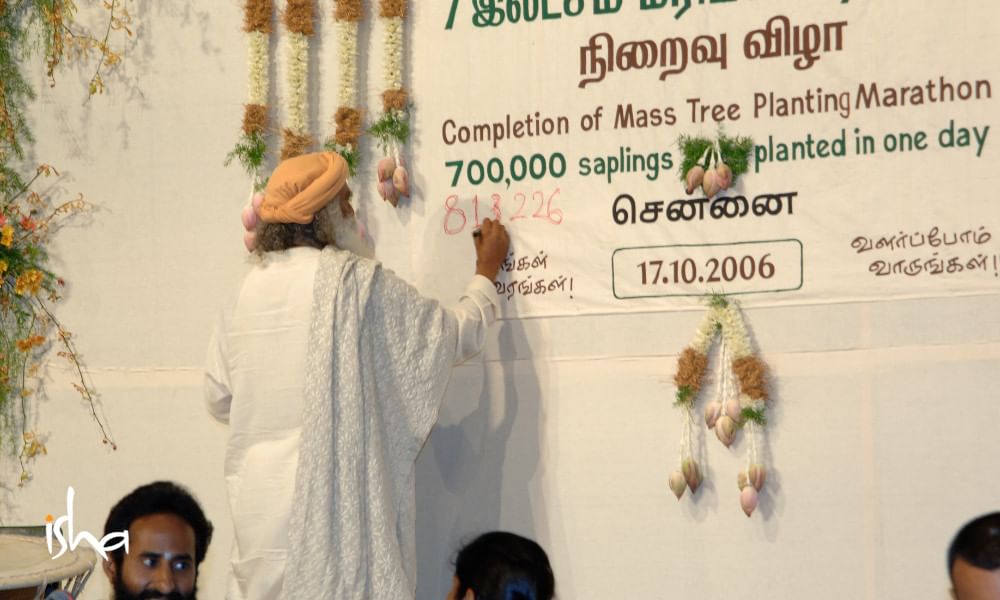
It isn’t often that you get an opportunity to set a Guinness World Record. In fact, for most of us, it’s downright impossible. But on the morning of October 17, 2006, over 250,000 people came together to set a Guinness World Record – not for personal acclaim, wealth or fame – but for Mother Earth.
On that cloudy morning, 256,289 volunteers of Isha’s Project GreenHands (PGH) turned up at over 6200 locations across the southern Indian state of Tamil Nadu, and planted 852,587 saplings over the span of a few hours. By the end of this massive exercise, they had collectively set a new Guinness World Record for the most saplings planted in three days.
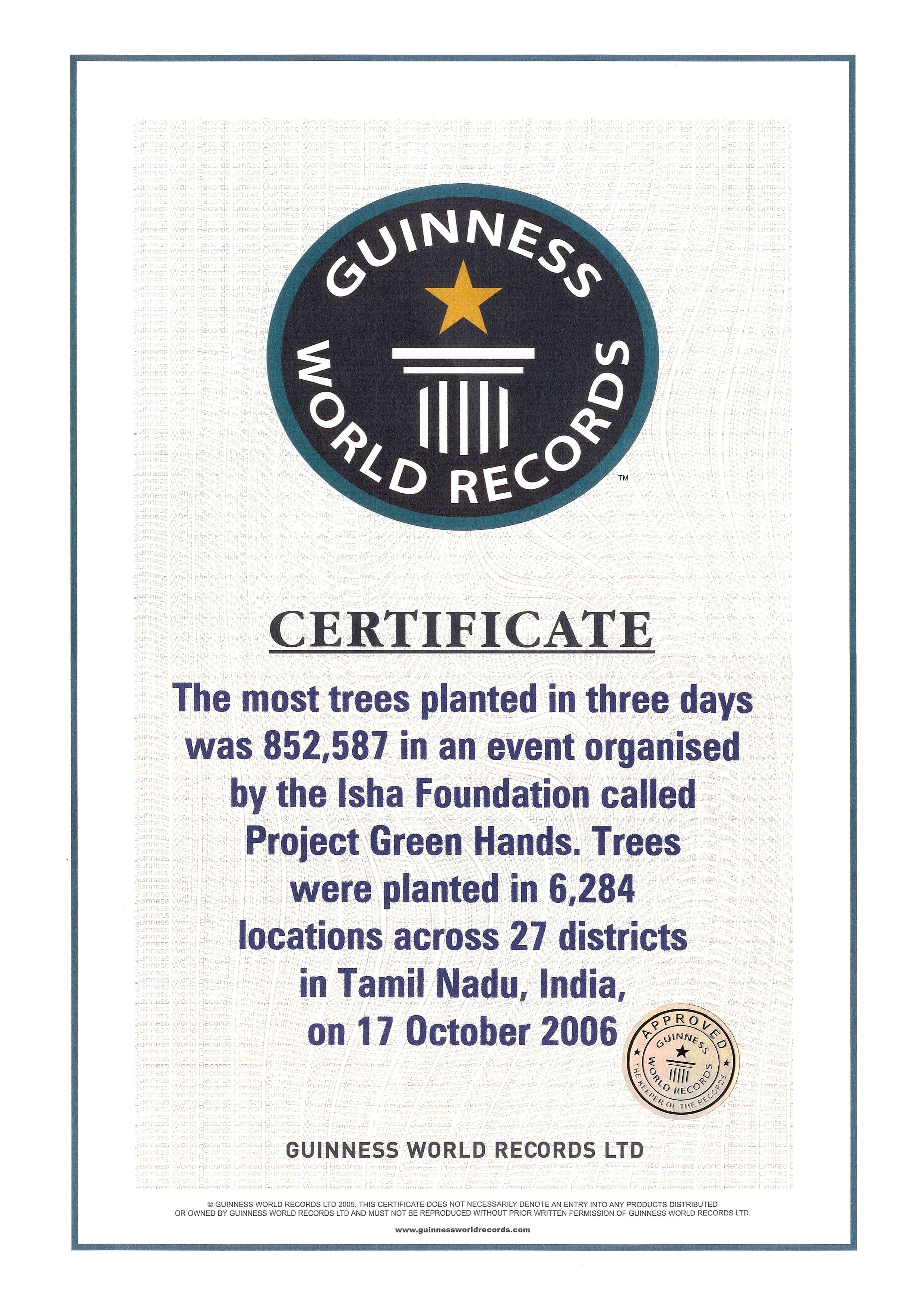
The Guinness World Record is the “shiny, bright thing” that everyone notices. But what went on behind the scenes to successfully implement this massive undertaking is equally, if not more impressive. A core team of volunteers coordinated activities across the state to inspire and bring together farmers, housewives, students, business people, government officials, celebrities and every section of society, to launch a true people’s movement to revive Tamil Nadu’s environment.
Planting Seeds in People’s Minds
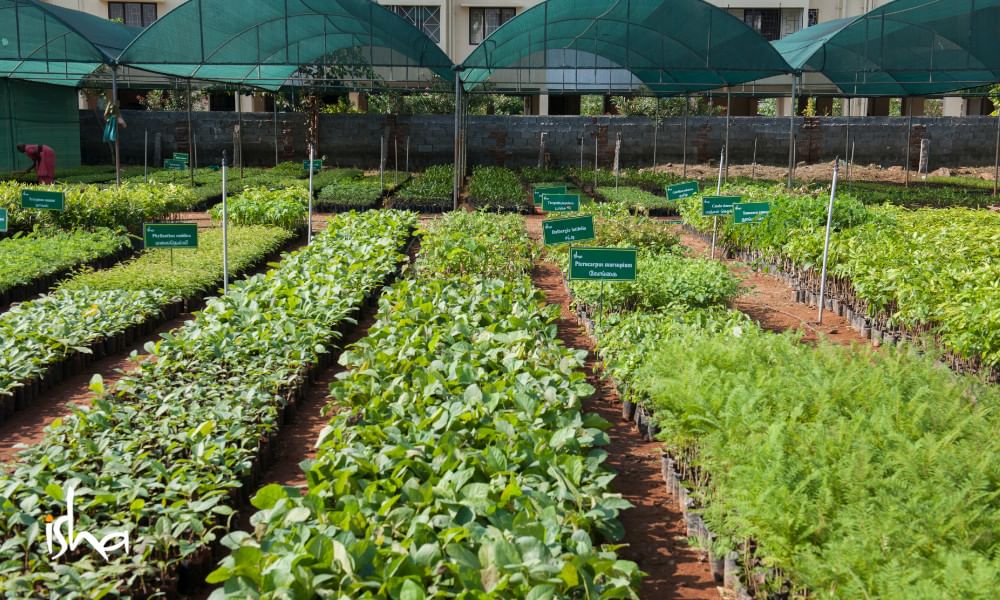
One key ingredient in this endeavour were the plant nurseries that PGH established across the state, which raised over 852,587 saplings for planting. Besides raising saplings, the nurseries also reached out to the community to bring a change in the hearts and minds of people. Nursery volunteers built relationships with the community and farmers, showing them how to care for and plant trees.
This effort helped people see the importance of trees in their life, and created an emotional connect within them. As Sadhguru says, the nurseries helped “plant trees in people’s minds” before translating that into a movement that mobilised millions of people to plant trees.
Today, PGH has helped people plant over 35 million saplings of 84 different tree species, raised in 32 PGH nurseries. In the experience of these people, trees are life and are vital to improve soil quality, retain rain water in soil and replenish dying rivers. Today, Isha nurseries have scaled to the point where they produce 5 million saplings per year. But all this can be traced back to rather humble beginnings – a small plot of land, a few enthusiastic volunteers and some relentless commitment.
A Brief History of Isha Nurseries
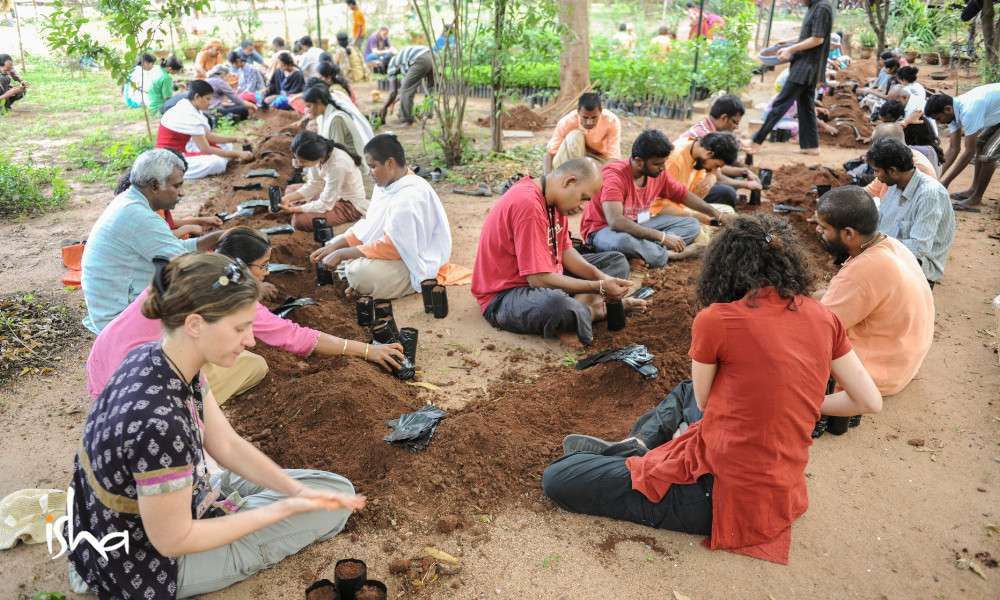
The first Isha nursery was created in 2004 at the Isha Yoga Center. A small team of brahmacharis (monks) and volunteers started the nursery from scratch, where they nurtured and brought their first sapling into the world.
This team put up signs at the yoga center that read “Free Saplings”, and anyone who visited the center was given a sapling for free. The team also went from village to village in the surrounding area to build awareness and provide guidance to the locals on how to plant and grow a tree. They brought along the saplings they had raised and donated them to the villages to plant. If you go to Madampatti – a nearby village – today, you will see full-grown trees that are 15 years old. These were born in that first little nursery.
In those early days, this team of brahmacharis and volunteers gradually began to develop expertise on how to raise a sapling.
How Do You Grow A Healthy Sapling?
Raising saplings at PGH nurseries has over the years, been refined into an exact science. Nurseries handle all aspects of growing saplings, from sourcing healthy seeds to creating seed pockets and beds, watching over the growth of the young saplings and ensuring successful distribution to localities where saplings are needed.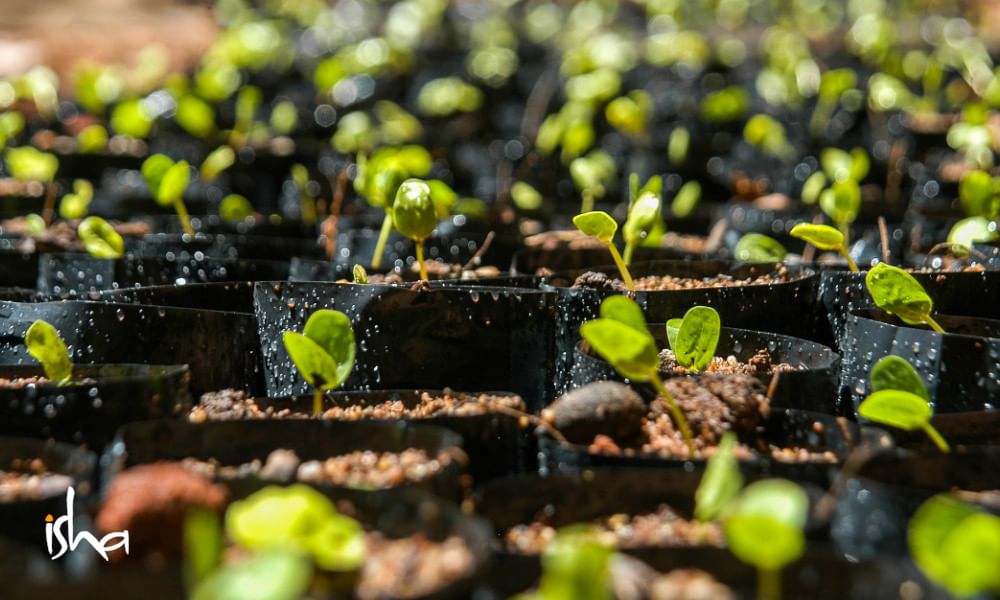
Seeds are first nurtured in an organic bed of cow manure and coconut skin (coir pith), with no chemicals or pesticides. Then the seedling are carefully placed in the shade and half sun, making them hearty and strong.
Subscribe
After 3 months of nourishment, routine pruning and care, the seedling becomes a mature sapling and is ready to be handed over to someone to plant. Saplings are distributed at a very nominal cost, allowing anyone to participate in restoring the ecology. The only real requirement is that the person make a commitment, that he or she will not only plant the sapling, but also care for it to ensure it grows into a healthy tree.
To ensure survival during transportation, saplings are moved as little as possible. Where mass transport is needed, PGH has developed a particular loading technique for trucks that enables 10,000-12,000 saplings to be transported at a time with minimal damage.
A crucial ingredient is the monitoring and evaluation of all these activities. From the time of seed collection to the development of planting areas, comprehensive records are maintained for future reference.
This level of care during the entire sapling life cycle ensures healthy saplings are produced that have a high survival rate of over 80%, even two years after being planted.
The Tsunami as a Catalyst
Within a few months of the nursery being established at the Isha Yoga Center, the nursery operations had to expand quickly and with short notice because a tragic disaster had struck off the coast of Tamil Nadu.
The 2004 Asian Tsunami struck much of the South Asian coast, leaving over 200,000 dead and immense damage in its wake. India, especially Tamil Nadu, suffered massive damage.
Isha Foundation swung into action immediately in providing medical care and other kinds of disaster relief. In this harrowing calamity, in India, over 10,000 people died and hundreds of thousands were displaced, lost their homes, and their livelihoods. In Cuddalore, alone, a total of 99,704 families were impacted by the Tsunami with 610 deaths, among which 214 were children.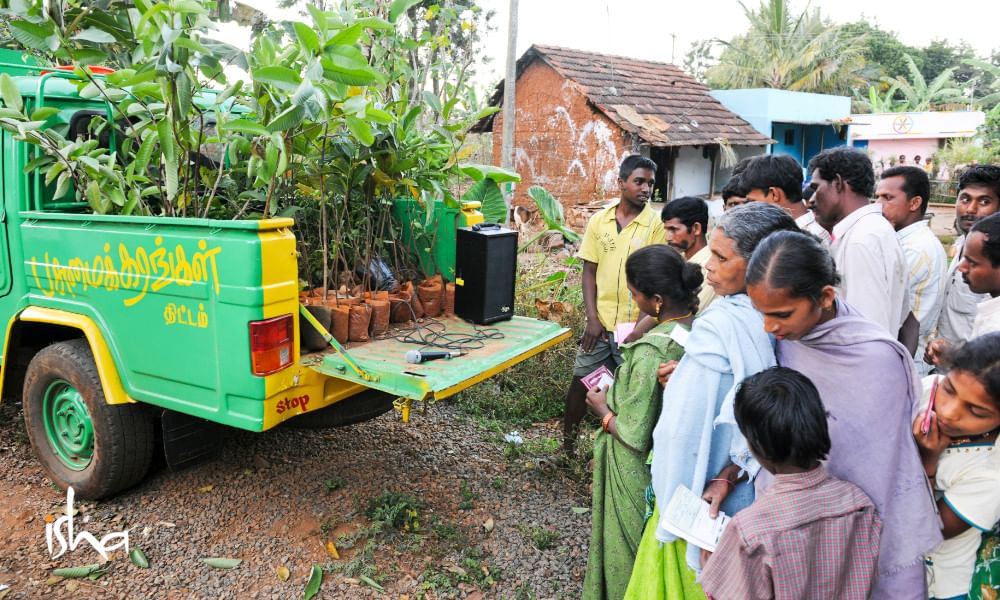
The impact on the environment was also disastrous. In the aftermath of the storm, Sadhguru said it was time to scale up the tree plantation project at a different pace. One part of the comprehensive rehabilitation in the tsunami-struck region was to plant a large number of trees. First, the goal was to plant 25,000 trees in Cuddalore and other tsunami-affected areas. This was the first mass-scale plantation conducted by Isha. Soon after, Sadhguru set a goal of planting 700,000 saplings across Tamil Nadu.
PGH was catalysed into action. By 2005, what began as one homegrown nursery evolved into PGH, and as the awareness spread, more nurseries were created. In a short time, PGH had grown from being a small, grassroots operation into a large scale consciousness-raising program that created awareness about increasing green cover in Tamil Nadu.
Networking through Nurseries
PGH rapidly built expertise and established numerous partnerships with communities and corporations throughout Tamil Nadu, from Chennai to Kanyakumari.
45 new nurseries were created and PGH partnered with corporations to provide land and warehouses in order to scale-up their capacity to plant. Each nursery included saplings appropriate to the locality and region.
Residents in the town of Neyveli even converted their land into nurseries and produced thousands of saplings. Although unskilled at the outset, they had heart and a willingness to be part of the movement. The movement was such a rapid success with the people of Tamil Nadu that at one point, Isha nurseries even ran out seeds to grow saplings!
Over the years, these partnerships have grown into various trusted relationships that are committed to bringing about awareness and a positive impact on the environment.
Corporate Volunteers Create Saplings
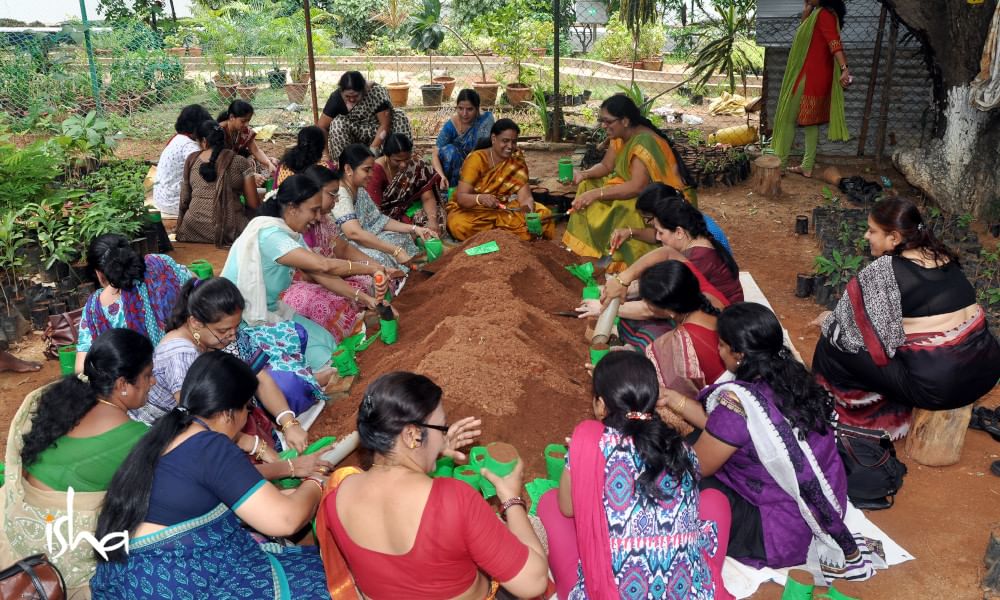
On April 9, 2009, the Chennai campus of the company, Larsen and Tuobro (L&T), started a nursery in collaboration with PGH. L&T’s volunteers spent their time, after office and on weekends, tending to these plants. So far, over 300,000 saplings have been grown and given to staff, schools and anyone interested in raising a tree.
Today, Isha nurseries continue to maintain relationships with corporations such as Scope International, Inautix and IBM, whose employees volunteer at nurseries to create saplings on weekends. Many enthusiastic employees even bring their families along to help.
One of the employees spoke of his experience after a day at the nursery. “We are working so hard for wealth, money, a home and other things, but is this sufficient for our next generation? No. These things are secondary. The most important thing is that we give them clean air and water.”
The employees work as volunteers, raising the saplings with total involvement. At the end of the day, they leave with a sense of fulfilment in their hearts, having contributed towards creating a more sustainable world for future generations.
Green Consciousness
These partnerships have been the seeds of the movement that have helped bring a rise in consciousness about the importance of our relationship with trees. And this consciousness raising happens in many different contexts, such as at weddings and in schools!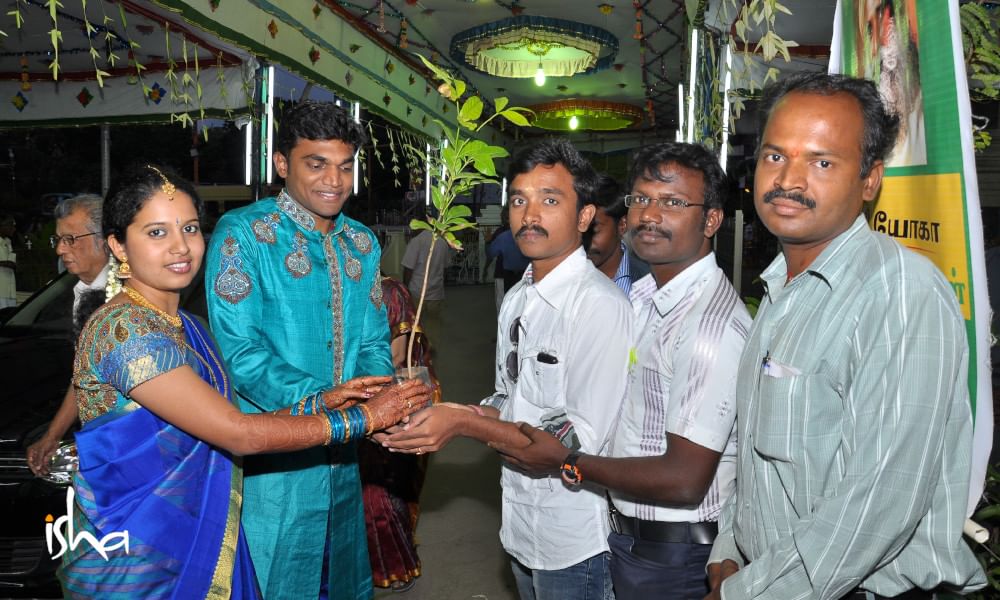
Over a third of the saplings distributed from PGH are through weddings. PGH helps facilitate sapling distribution during special occasions, where they put up a counter and a small PGH banner. A volunteer is available to speak to guests about the uses and characteristics of these trees, and offer them the saplings for planting. PGH limits distribution to only guests who intend to plant the saplings and nurture their growth.
Isha nurseries also maintain relationships with schools through the Green School Movement. PGH launched the Green School Movement in 2011 in association with the Tamil Nadu Department of Education. The objective was to create “green consciousness” among school children by bringing about an attitudinal change towards the environment and involving them in sapling production and plantation.
The program is a huge success. In fact, on January 5, 2015, PGH in collaboration with the Tamil Nadu Educational Department, helped students plant 900,000 saplings on a single day. A significant aspect of the movement is that children are involved in planting, growing and nurturing the saplings, leading to a deep appreciation for nature. The movement also encourages communities to participate. Community tree plantation is undertaken, after which the ownership of planted saplings is transferred to the local community who take responsibility for their survival.
Agroforestry Movement to Save Farmers
One of the most significant aspects of the nurseries is that they help address the deepening crisis currently occurring within the Indian agricultural community. Agriculture, which depends on increasingly erratic weather conditions, employs a large fraction of India's workforce. This workforce however, is becoming increasingly desperate as the combined forces of climate and market take a toll on the productivity and economic wellbeing of the farmer.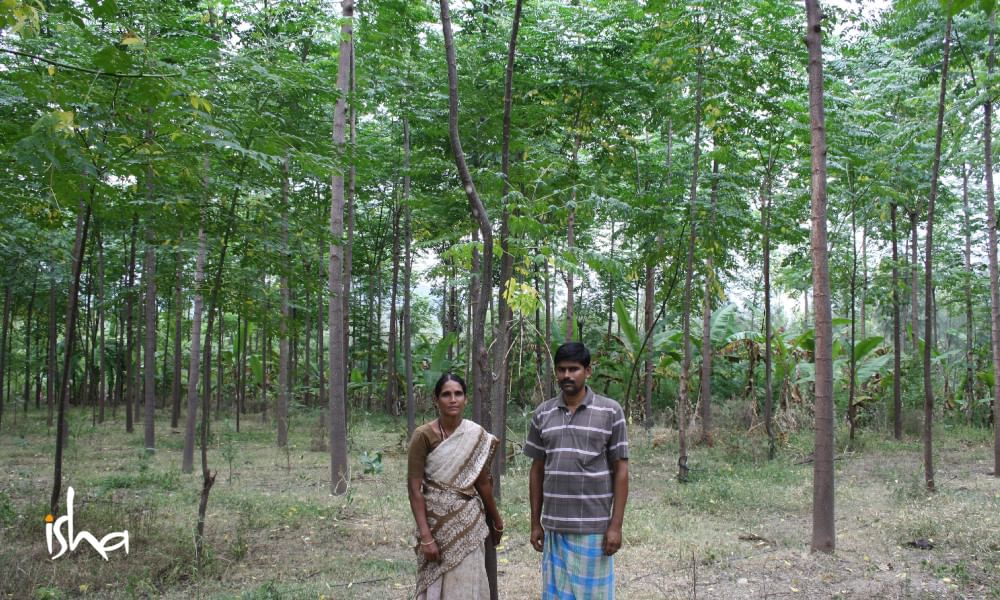
PGH realizes that trees can be a good source of income that require minimal maintenance. PGH recommends numerous varieties of trees that farmers can plant, such as Teak, Rosewood, Red Sandal, Mahogany, Silk Cotton, Jackfruit, Amla, Mango and Avenue trees, as part of the agroforestry initiative. PGH’s strategic plan has given farmers a fundamental role in project implementation because they have the land and the need to plant and nurture trees.
Agroforestry is not a new idea. In the early days of this farmer outreach, PGH got a boost from Dr. G. Nammalvar, the renowned environmentalist who worked for half a century on the environment and sustainable agriculture. From choosing native species to aspects such as community involvement, Dr. Nammalvar guided PGH and played a key role as project advisor. His guidance in tree planting as well as the Isha Agro Movement – an initiative focusing on sustainable agriculture – was invaluable.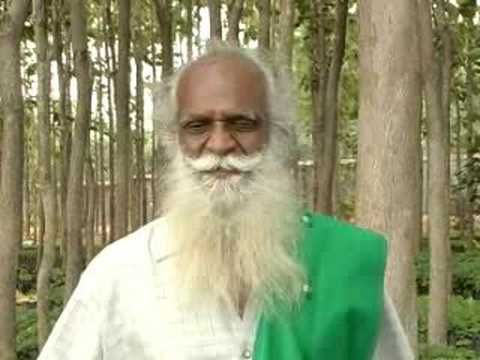
By combining agroforestry and organic farming techniques with comprehensive training and re-education programs, PGH supports farmers to re-establish the ecological balance of their lands, which means, in part, creating the conditions for a rich and porous soil that can hold rain, feed groundwater aquifers and revive rivers.
Time to Scale-Up
In this journey of 15 years, PGH has brought together diverse sections of society, united by a common vision to increase India’s green cover. This culture of caring for ecology has been the most urgent need of our times. The nation, along with the world, suffers a dangerous environmental crisis. There is an urgency today that never existed before, and if action isn’t taken now, we will pay an immense price.
The time and the necessity has come to act so that we can turn the situation around. This is why Cauvery Calling has been initiated. Cauvery Calling is a campaign to support farmers to plant 242 crore trees and revive Cauvery.
Nurseries will play a big role in this campaign, and are in the process of scaling up to meet the requirement. If you would like to support the campaign, you can volunteer or contribute Rs 42 per tree. Cauvery is calling. Do you have the heart to hear.



